Seven of the Best New Perennial Flowers of 2023
Consider adding these distinctive new varieties of salvia, coneflower, shasta daisy and more favorite perennials to your garden this year.
An innovative crop of new perennial flowers is set to debut for the 2024 growing season, including new pollinator-attracting options, new choices for deer-plagued gardeners, and an all-new type of plant.
Here are seven interesting newcomers worth checking out.
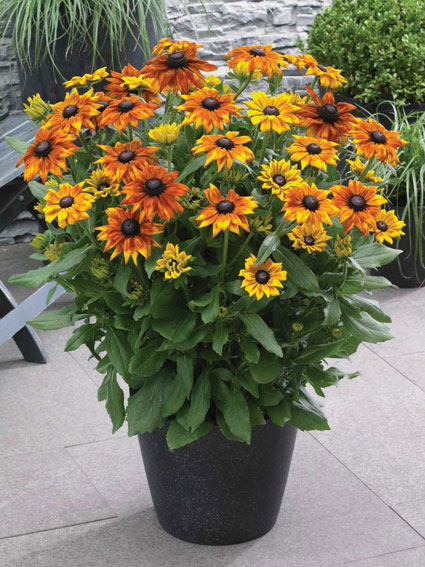
Echibeckia Summerina, image courtesy Pacific Plug and Liner
An “echibeckia” is a recently developed cross between coneflowers (Echinacea) and gloriosa daisy (Rudbeckia).
The new Summerina series from California’s Pacific Plug and Liner is showy enough that it earned the 2023 Editor’s Choice Medal of Excellence award from the Greenhouse Grower trade magazine.
The magazine cited the line for its big flowers, fast growth, long bloom time, disease-resistance, and flower colors that offer “bursts of rich browns, oranges and yellows.”
Summerina echibeckias have the habit and central flower cones of coneflowers but the warm colors of gloriosa daisies.
To achieve all of the above, echibeckias give up a bit of winter-hardiness, being rated as perennial only in USDA Hardiness Zones 7-9. They grow best in full sun.
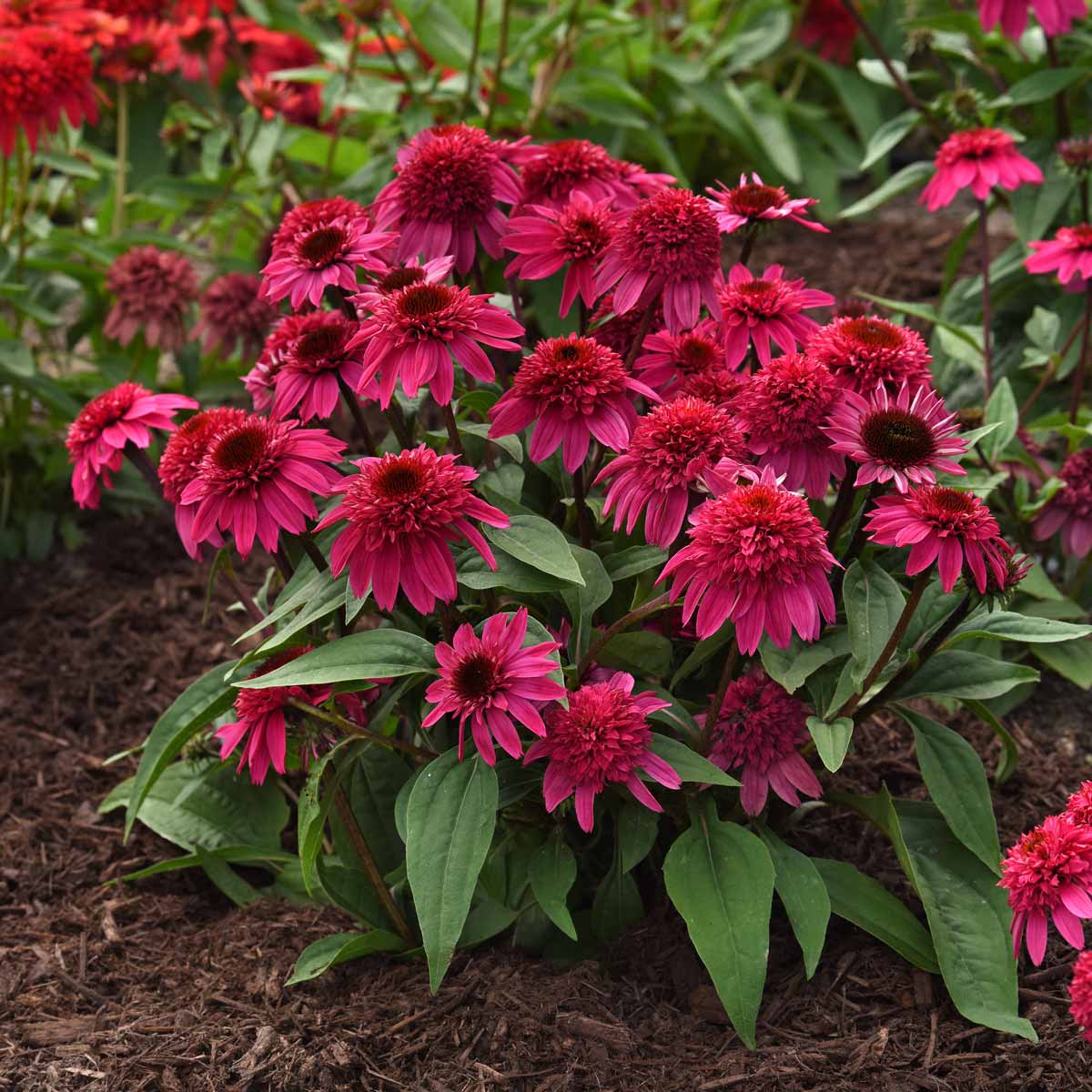
Coneflower Double Scoop Deluxe Watermelon. Image courtesy Darwin Perennials
This new four-color line of coneflowers stands out for its compact habit (less than two feet tall) and heavy set of double-petaled flowers.
The Watermelon variety of Double Scoop Deluxe coneflowers is especially attractive and won a Retailer’s Choice award at last summer’s AmericanHort Cultivate industry show as a new plant with the potential to become a garden-center best-seller.
Introduced by Darwin Perennials, the Double Scoop series features Orangeberry, Raspberry, and Strawberry varieties in addition to Watermelon.
Coneflowers, which are U.S. natives hardy in Zones 4-9, grow best in full sun, are good pollinator plants, and are seldom bothered by deer.
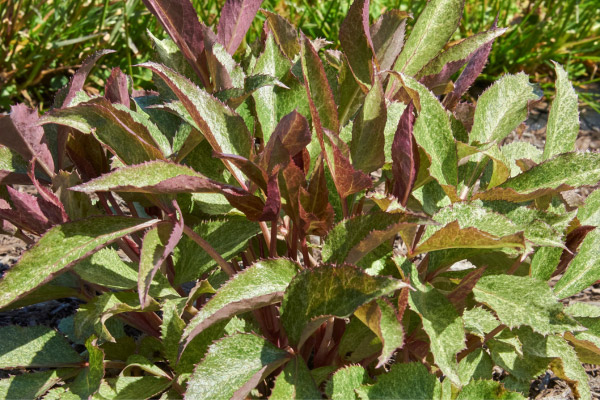
Hellebores The Rockies Snowshoe Mountain. Image courtesy Aris Horticulture
Novel leaf colors are the draw behind this new series of hellebores (Lenten rose) being introduced by Ohio-based Aris Horticulture under the Must Have Perennials brand.
The Rockies series – with varieties named after mountains, i.e. ‘Grand Teton,’ ‘Hollowtop,’ and ‘Pike’s Peak’ – was developed specifically for foliage interest. The different varieties sport leaf shapes and colors such as white variegation, bright gold leaves, silver spiky leaves, and white-flecked foliage.
Plants grow a compact eight to 10 inches tall in shade or part shade. They’re winter-hardy in USDA Zones 6-9.
Flower colors range from white to pink to burgundy. Like all hellebores, the Rockies series is not a likely target of deer or rabbits.
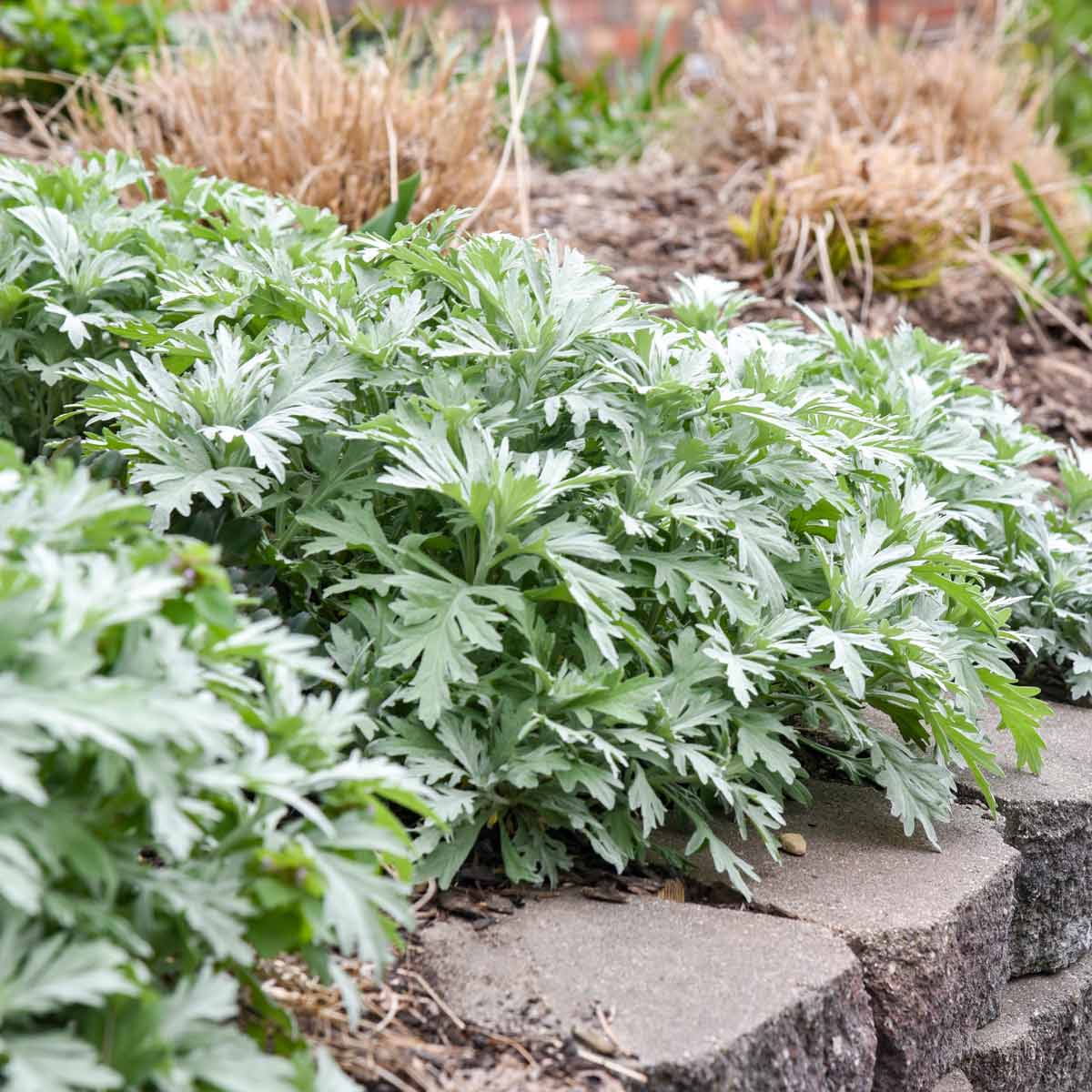
Artemisia ‘Silver Lining’. Image courtesy Walters Gardens
Here’s another new deer- and rabbit-resistant plant in which the foliage is the star.
Artemisia ‘Silver Lining’ is a low, mounding plant with cut-edged silver leaves.
Walters Gardens, which is introducing the plant under the Proven Winners brand, says it’s a hybrid of a native species (Artemisia ludoviciana) that brings that plant’s leaf color and cold-hardiness but not its spreading runners (which can make the straight species overly aggressive in a perennial garden).
Plants grow about 16 inches, don’t flop apart as do many artemisias, and tolerate drought and poor soil. ‘Silver Lining’ is winter-hardy in USDA Zones 4-9.
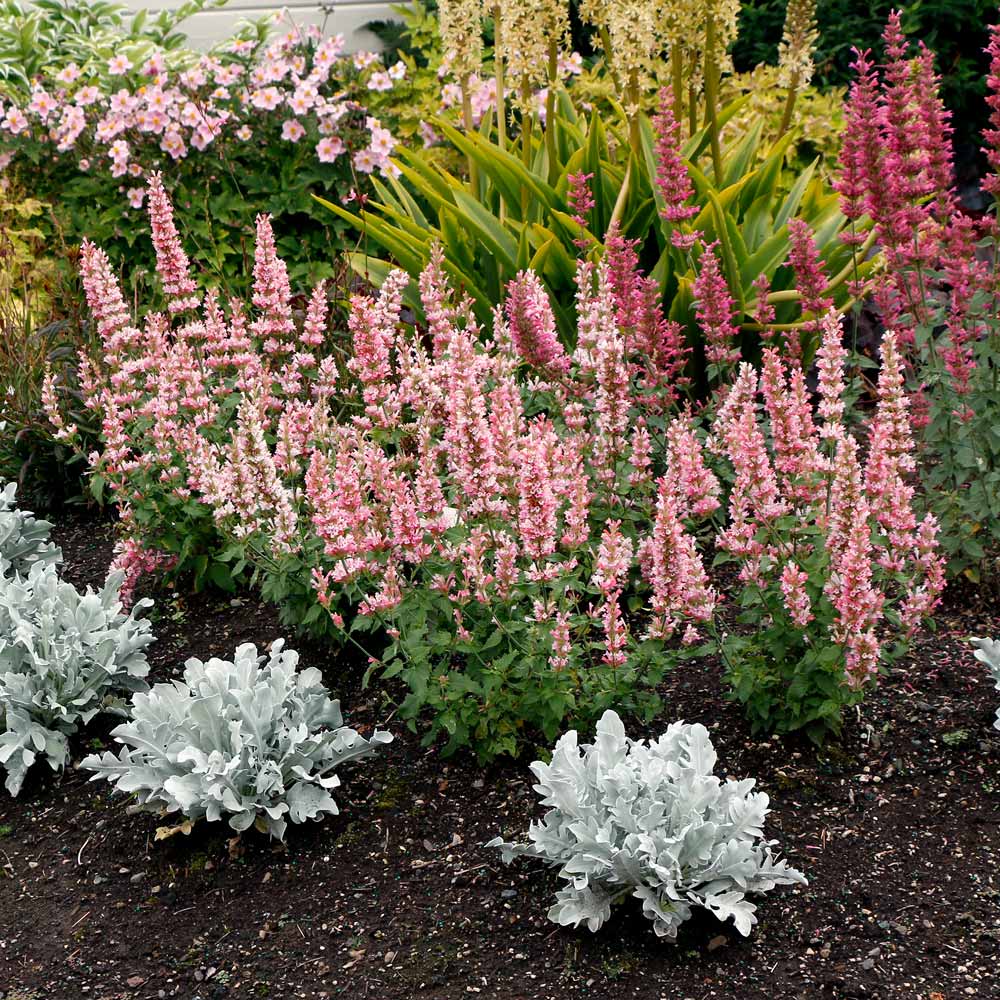
Agastache ‘Pink Pearl'. Image courtesy Terra Nova Nurseries
This 2024 introduction from Oregon-based Terra Nova Nurseries brings a new color to hummingbird mint, an upright perennial that lives up to its name by being a magnet for hummingbirds and other pollinators.
‘Pink Pearl’ is different for its light pink blooms that are large and densely covered in addition to being a departure from agastache’s usual purple to blue-purple flowers.
It’s also an exceptionally long-blooming perennial (June through September), has excellent disease resistance, tolerates drought, and is seldom bothered by deer.
‘Pink Pearl’ does best in full sun and grows about 16 inches tall. It’s winter-hardy in USDA Zones 6-10.
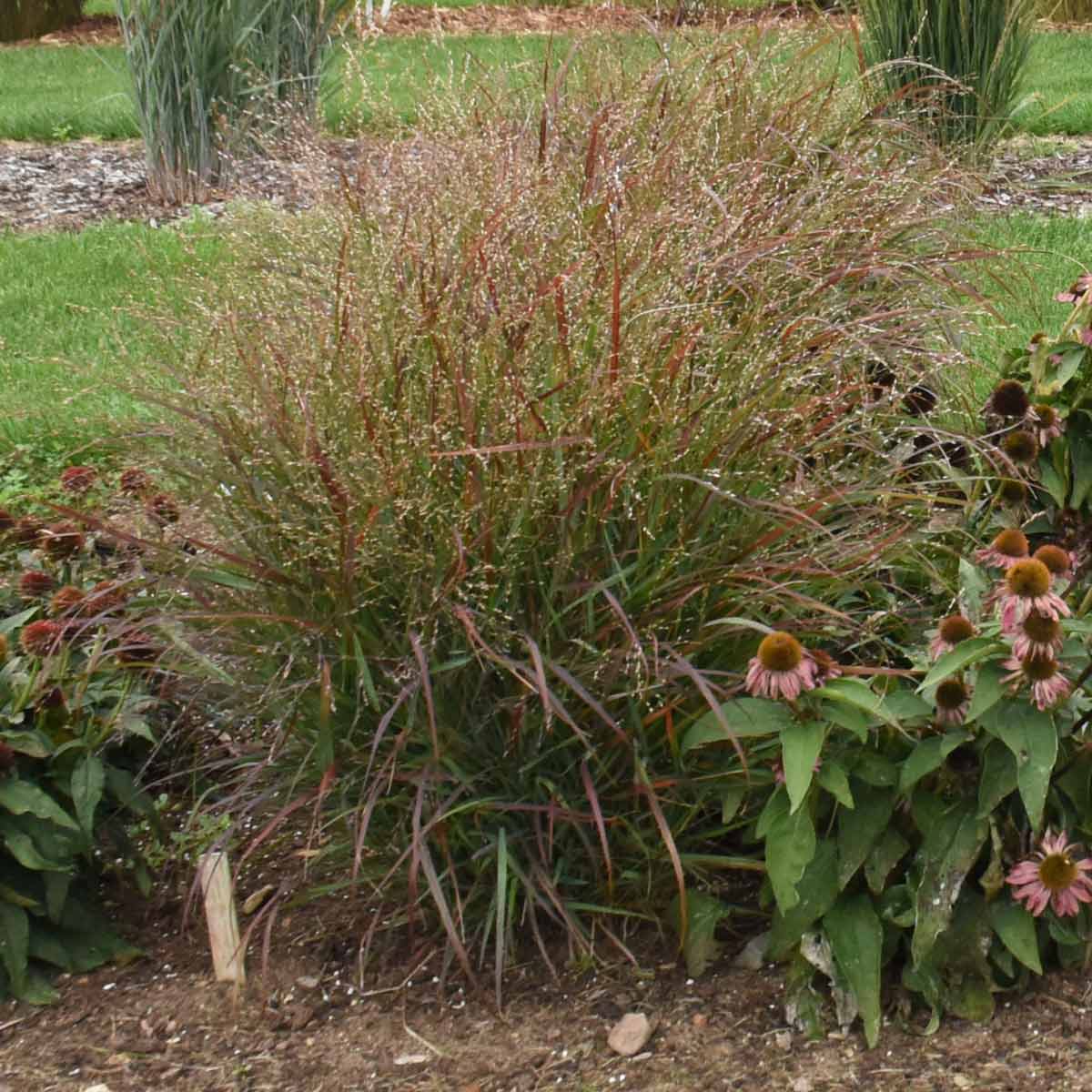
Switchgrass ‘Red Flame’. Image courtesy Walters Gardens
Another native species that deer usually don’t bother is red switchgrass.
The new-for-2024 ‘Red Flame’ features blades that start out blue/green and then turn wine-red until the end of summer.
Plants grow about three-and-a-half feet tall, including the purplish-red flower plumes that form in late summer.
Introduced by Walters Gardens, ‘Red Plume’ grows best in full sun and tolerates a range of soil and moisture conditions. It’s winter-hardy in USDA Zones 4-9.
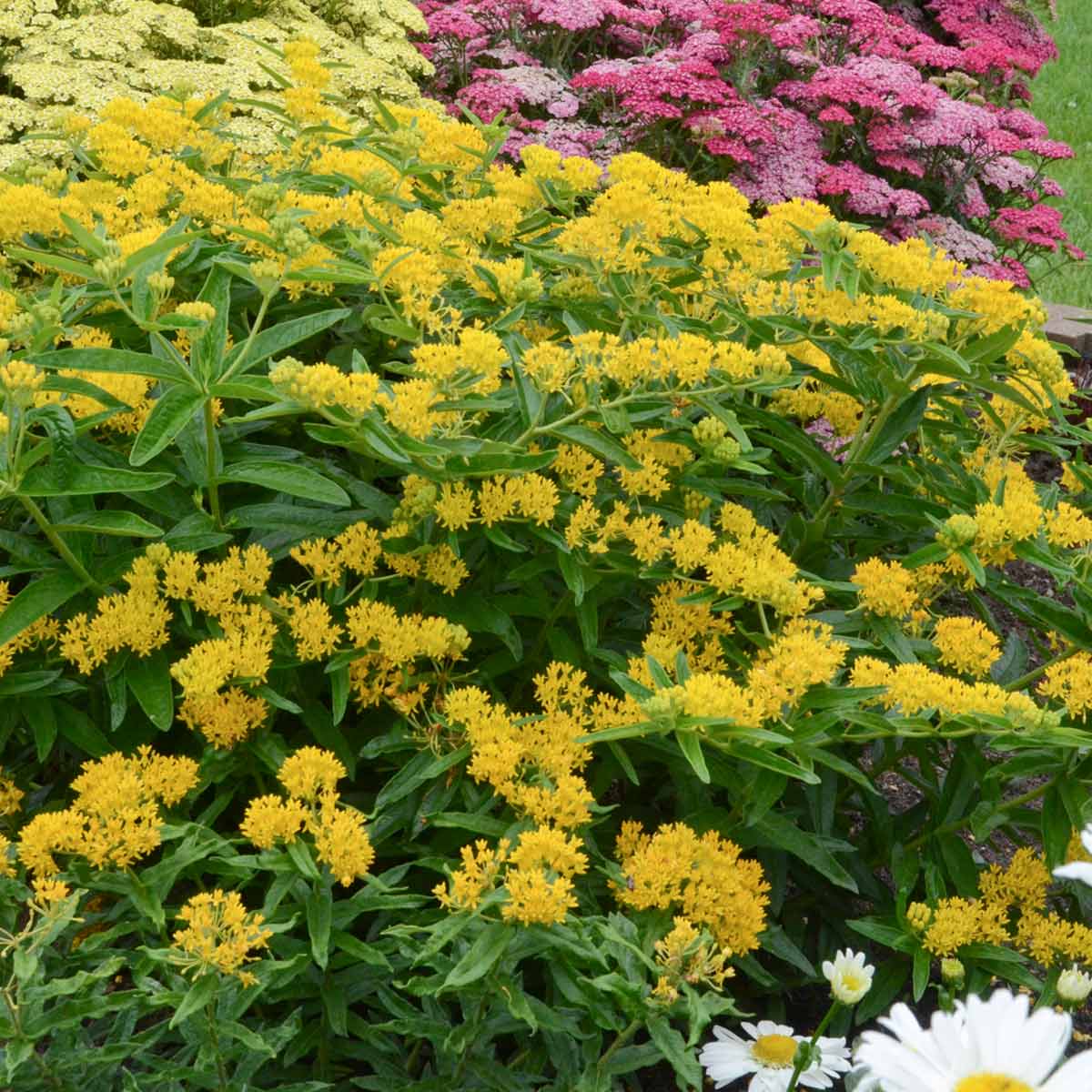
Milkweed Hello Yellow. Image courtest Walters Gardens
Given the pollinator-gardening rage lately, both catalogs and garden centers are adding new milkweed color variations this year to the traditional option of orange butterfly weed (Asclepias tuberosa).
Two of them are milkweed Hello Yellow, which produces clusters of bright yellow star-shaped flowers, and milkweed Soulmate, which produces cherry-pink clusters of star-shaped flowers.
Both of those flower in July and August, then produce late-season “fluff” pods that send out seeds that can sprout new plants the following spring.
The mother plants are winter-hardy in USDA Zones 3-8 and should come back year after year as well. Because of their tap roots, though, they don’t transplant well.
Milkweed plants grow two to three feet tall, tolerate drought and poor soil, and are a necessary species for monarch caterpillars. They grow in full sun to part shade.